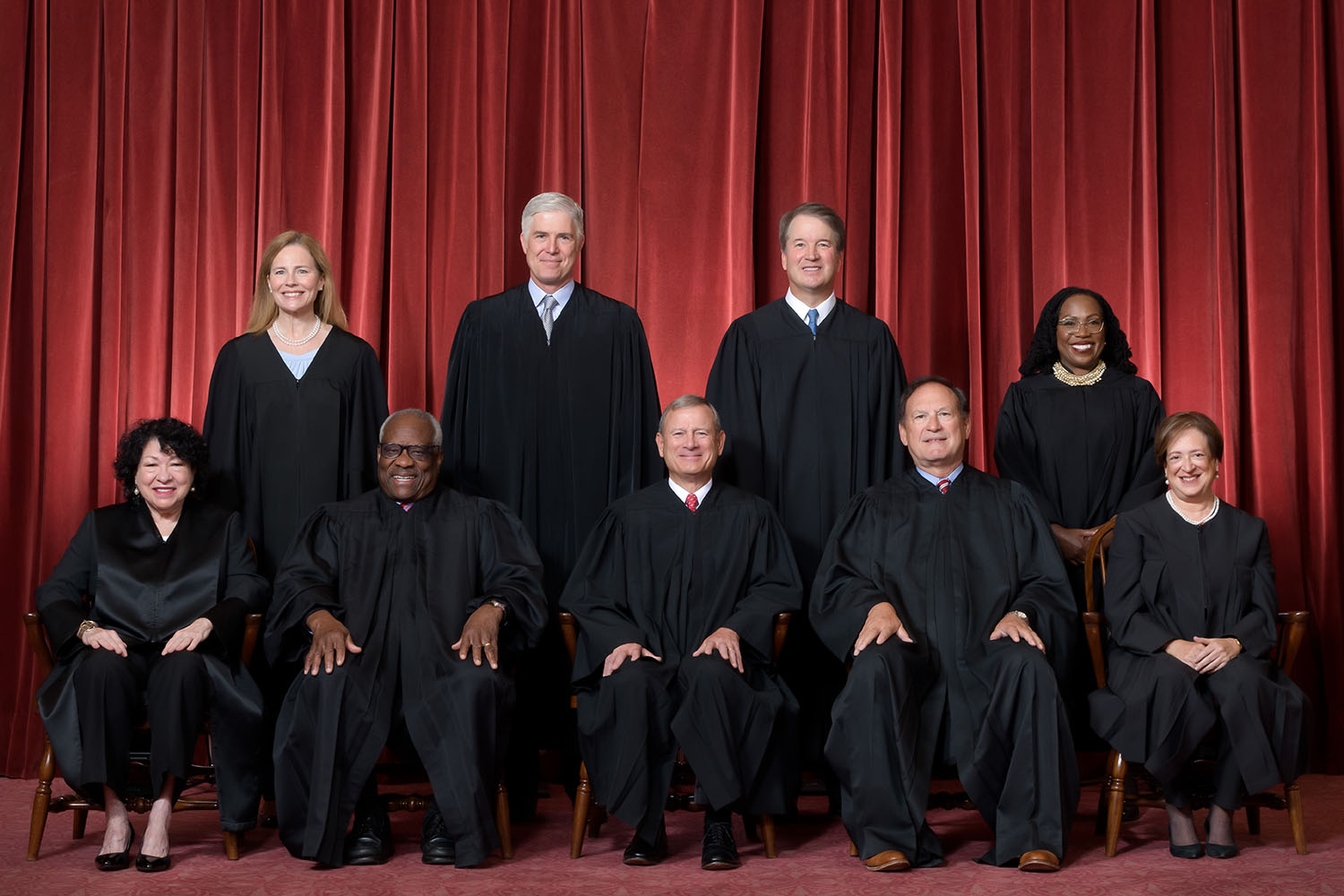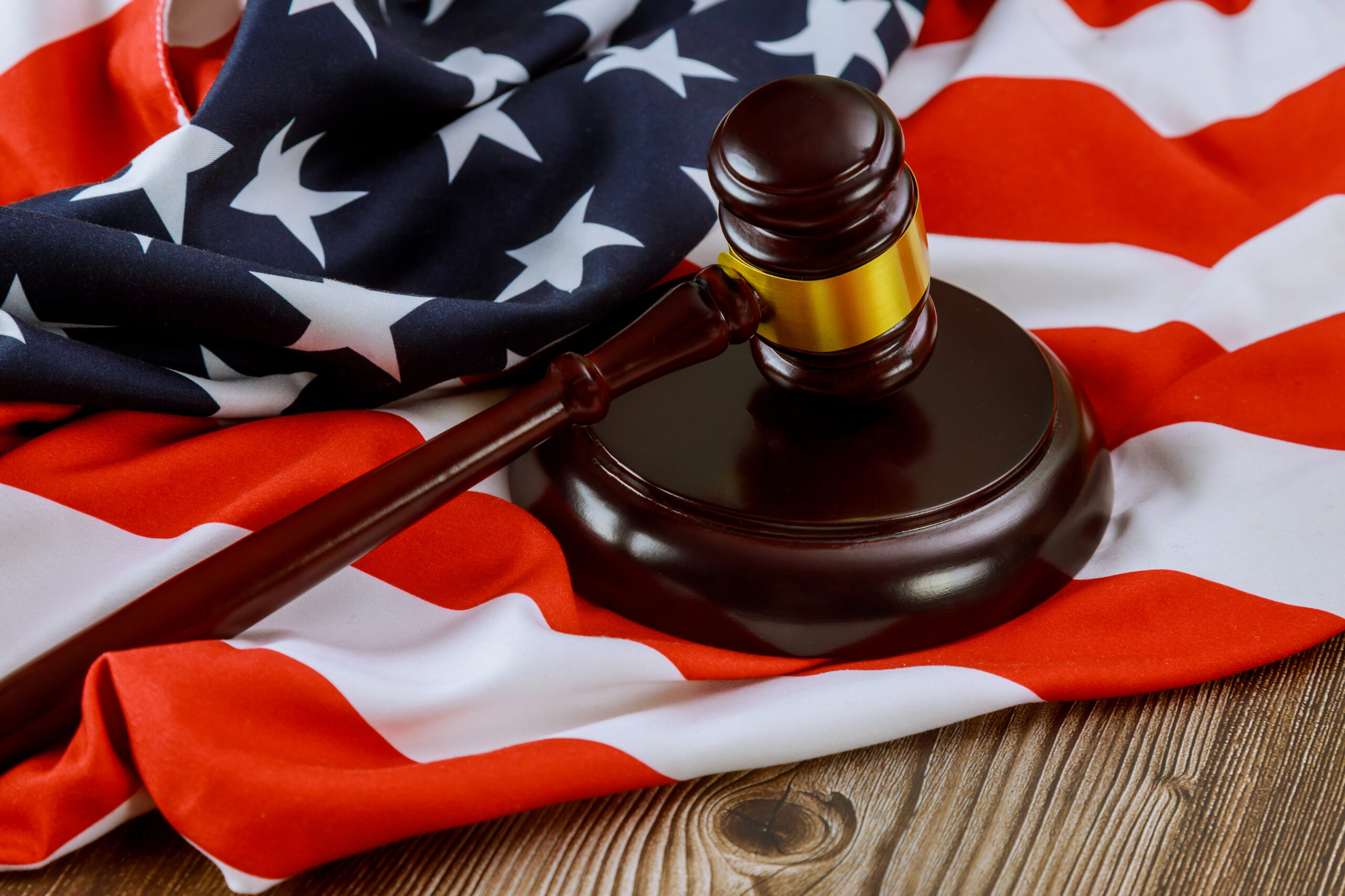In the best of all worlds, the states would look at the Constitution, look at their laws, and gut their regulations until every last regulation aligned with our Constitution.
This is not the best of all worlds. There are too many politicians who are agenda-driven. There are too many courts that are agenda-driven. The agenda is more important than the Constitution or The People.
This means that judges who have an agenda will look for ways to manipulate case law or the lack of case law.
Does the Second Amendment apply to the states? We don’t think so. The Supreme Court never said that it does, so our opinion is the correct opinion.
Because our legal system is built on common law, the law must apply to everyone equally. Once a decision has been made based on a particular line of reasoning, other, similar decisions should have the same result.
In rogue courts, this will ratchet in only one direction. If the case law favors The People but at odds with the court’s agenda, the case law won’t apply. If the case law favors the court’s agenda, then it will apply.
One of the lawyers I follow or use to follow puts it as, “Congress writes the bill, the President makes it law, the Courts decide what it means.”
It doesn’t matter what the intentions of Congress and the Executive branch might be when drafting and creating law, it only matters how the Courts interpret the law.
There are 600+ Federal District Court Judges. Each of them has an opinion about what the law means. Some of them attempt to respect, to adhere to the Constitution, some of them do not. Regardless, because there are so many, there will be differences in opinion.
To bring the inferior courts into agreement, each district court reports to a circuit court. The circuit courts will accept cases for review and publish opinions, which the inferior district courts must follow.
This brings the district courts into alignment within a circuit. Unfortunately, the inferior circuit courts are often agenda-driven. This means that the circuits will split on agenda differences. The Fifth Circuit court is more likely to find for The People, for The Constitution. The Ninth Circuit is more likely to find for the state, against The People.
When the circuits split, or if the matter is of importance to the Supreme Court, they might agree to hear a case. When the Supreme Court issues their Opinion, the inferior courts should follow instructions the Supreme Court issues.
The judicial Power of the United States, shall be vested in one supreme Court, and in such inferior Courts as the Congress may from time to time ordain and establish. The Judges, both of the supreme and inferior Courts, shall hold their Offices during good Behaviour, and shall at stated Times, receive for their Services, a Compensation, which shall not be diminished during their Continuance in Office.
— U.S. Constitution, Article III, Section 1
The Process
A court case starts by a person filing a suit. In a criminal case, this is the state, as represented by the prosecutor. The case is filed against someone. Remember that corporations are legally people. I’m going to ignore the criminal side, as I’m just not interested in that side, at this time.
The person opening the suit is the plaintiff. The other party is the defendant. The plaintiff will state a harm and request relief from the harm. The court must be able to grant that relief.
Let’s consider a common situation, a divorced man has been ordered to pay child support. He works to better himself and finds himself promoted or working in a better paying job. His ex-wife can file suit to have the child support increased.
She will allege that he is making more money, part of which should be going to his children.
There is alleged harm, he is shorting his children. The court can remedy the situation by ordering him to pay more in child support. The court grants her the relief she was seeking
Turn it around, a divorced man goes to pick up his children. His ex-wife refuses to hand them over for visitation. It is a Friday, the courts are closed, he goes home without his children.
On Monday, he attempts to file a suit. He alleges that his ex-wife denied him his visitation rights. He asks that he get the weekend with his children.
There is no way for the court to give that weekend back. It is gone. It is not a case for the courts. There is no relief the court can grant to fix the harm that was done.
There must be standing and an active conflict for the courts to act.
The suit makes allegations. If the allegations are about the law, the plaintiffs can request summary judgment. This means that the case can be decided by the courts without requiring facts/evidence be provided.
If there is a need for evidence to be collected, that requires fact finding.
Consider these two suits, 1) The plaintiffs file suit asking for a summary judgment finding that requiring permits to carry a firearm is unconstitutional. 2) The plaintiffs file suite asking for an injunction forcing the sheriff’s department to issue permits to carry in a timely fashion.
In the first case, there is no evidence or facts to be found. It is a matter of law. Per case law, when a constitutional challenge is made, the plaintiff needs to show that the proposed conduct implicates the plain text of The Constitution. Once the plaintiffs have shown that implication, the burden shifts to the state to prove the modern regulation is inline with this Nation’s historical tradition of regulation.
Note that this language is similar to what we saw in Bruen. That is because Bruen didn’t invent anything new. This has been the standard for at least a hundred years.
In the second case, the plaintiffs will need to prove that the sheriff’s department is not issuing permits in a timely fashion.
The steps of the case:
- File suit
- Request Temporary Restraining Order
- Request Preliminary Injunction
- Request Summary Judgment
- TRO granted or denied.
- Pleadings filed regarding the Preliminary Injunction
- Hearing on the Preliminary Injunction
- Preliminary Injunction granted or denied
- Pleadings filed regarding Summary Judgment
- Hearing on the Summary Judgment
- Summary Judgment granted or denied
Until the case has reached step 11, Summary Judgment granted or denied, the case is in an interlocutory state.
Temporary Restraining Order (TRO)
When a case is filed, “bad things” could be happening, which needs to be stopped immediately.
A person gets notice they are to be evicted the following day. They request a TRO to stop the eviction.
An alien is detained and will be deported. Their lawyer files a suit to stop the deportation and requests a TRO to stop the alien from being removed from the local jurisdiction.
A TRO lasts until a preliminary injunction is issued or denied. They are supposed to only a short period of time. If it is an urgent matter, then the preliminary injunction should be briefed and heard in a short period of time. A week, maybe two should be the limit of a TRO.
IN DECIDING AN APPLICATION FOR A PRELIMINARY INJUNCTIONunder Rule 65 of the Federal Rules of Civil Procedure, courts in the Ninth Circuit look to the following factors:
- The movant has shown a likelihood of success on the merits
- There is a likelihood that the movant will suffer irreparable harm in absence of a preliminary injunction.
- The balance of equities tips in the movant ’s favor.
- The injunction is in the public interest.
Stormans, Inc. v. Selecky, 586 F.3d 1109, 1127 (9th Cir. 2009)
To determine whether to issue a TRO, the courts in the Ninth Circuit apply the same analysis used to evaluate a motion for preliminary injunction. McCarthy v. Servis One, Inc., 2017 U.S. Dist. LEXIS 32622, at *9 –10 (N.D. Cal. Mar. 7, 2017).
A party seeking a preliminary injunction in the Ninth Circuit must meet one of two variants of the same standard. First, a party can show that he or she is likely to succeed on the merits, that he or she is likely to suffer irreparable harm in the absence of preliminary relief, that the balance of equities tips in his or her favor, and that an injunction is in the public interest. Alliance For The Wild Rockies v. Pena, 865 F.3d 1211, 1217 (9th Cir. 2017). Alternatively, under the sliding scale variant of the standard, if a plaintiff can only show that there are serious questions going to the merits —a lesser showing than likelihood of success on the merits —then a preliminary injunction may still issue if the balance of hardships tips sharply in the plaintiff ’s favor, and the other two factors are satisfied. Alliance For The Wild Rockies v. Cottrell, 632 F.3d 1127, 1135 (9th Cir. 2011).
These two alternatives represent extremes of a single continuum rather than two separate tests. Immigrant Assistant Project Los Angeles County Fed ’n of Labor v. INS, 306 F.3d 842, 873 (9th Cir. 2002).
We see one of the issues with rogue courts, such as the Ninth. The Supreme Court has stated that TROs, Preliminary Injunctions, and stays are extraordinary actions which require the Winter Factors be used. Here, the Ninth has said that an inferior, district court, can use the Winter Factors, or use a sliding scale.
When using a sliding scale, the inferior court is supposed to use the “balance of hardships”. Balance of hardships is not part of the Winter Factors. This gives courts in the Ninth Circuit to decide that anything is a hardship, which allows them to grant TROs, Preliminary Injunctions, and Stays when the party requesting them hasn’t shown a likelihood of success on the merits.
Preliminary Injunction
For a preliminary injunction, the court needs the plaintiffs and defendants to file briefs to demonstrate why the preliminary injunction should be granted or denied. The plaintiff files their motion for a preliminary injunction. The defendant files their response. The plaintiff then files a reply to the response.
If the court requires more, they will request more. If defendants feel they need to reply to the reply, they ask permission of the court to do so.
The court then schedules a hearing. The parties can meet independently of the hearing. They can file a joint motion on what they think the preliminary injunction should be. The plaintiffs can file a motion suggesting what the wording of the preliminary injunction should be. The defendants might file a “we don’t think it should be granted, but if it is, this is what the wording should be.”
After the hearing, the court will issue their order granting, denying or granting in part and denying in part the requested preliminary injunction.
The process of getting a preliminary injunction is adversarial. The process of getting a TRO is not.
If a preliminary injunction is granted, that injunction will be in place until final judgment is issued.
Final Judgment
After the preliminary injunction is granted (or not), the parties start filing their arguments, briefs, motions. Amicus Curiae can file briefs as well.
During this process, the parties will meet, discuss what can and cannot be agreed to between them. Anytime an agreement is reached between the parties, a motion if filed with the court to get the court’s approval.
There will be status reports and hearings to make sure everybody is on track to have everything filed on time.
Finally, there will be arguments made in court.
After the arguments have been made, the court will make their decision and issue their final judgment.
When the final judgment is given, the case is no longer in an interlocutory state, at the district level.
Appeals
Normally, a TRO cannot be appealed. The thinking is that since it lasts such a short time, by the time the superior court has heard the arguments, the TRO should have expired.
Since a TRO is supposed to maintain the status quo, there should be nothing in a TRO that cannot be undone, with a proper application of money.
If a party appeals a TRO or the denial of a TRO, the superior court should apply the Winter Factors and there must be an extraordinary reason for the intervention.
To have the Supreme Court hear an appeal regarding a TRO is almost unheard of. To have them action a TRO is even rarer.
The normal method that is used to stop a TRO with a deadline is to grant an administrative stay long enough for the deadline to pass. This gives the defendant time to respond without facing contempt charges.
Again, TROs normal cannot be appealed.
A Preliminary Injunction can be appealed. Since a Preliminary Injunction lasts for the duration of the case, a “bad” Preliminary Injunction can cause immense damage.
It is also the case that a Preliminary Injunction should not normally grant the relief sought in final judgment. If what you are asking for in final judgment is for the homeowner to stop hoarding rainwater and the preliminary injunction requires the rainwater to be distributed to all their neighbors, there is no way to make the homeowner whole when the dry season hits.
The Preliminary Injunction might require the homeowner to retain that rainwater, not using it nor releasing it.
The Preliminary Injunction can be appealed. From the District Court it is appealed to the Circuit Court. From there it could be appealed to the Supreme Court.
After the final judgment is issued, the case at the District Level is done. The case is no longer in an interlocutory state.
Findings of fact cannot be appealed. Thus, if the District Court finds that the sheriff is taking 18 months on average to issue a permit to carry, the sheriff can appeal that finding of fact.
They can appeal the procedure and rules used to make the determination. For example, the sheriff submitted documentation showing that 10,000 permits were granted within 30 days, but the district court refused to accept the documentation because the staples were in the wrong place.
Relief From Appeals
There must be an active controversy for a court to intervene. If there is no active controversy, the case is moot.
A criminal on death row is appealing his sentence. He dies of a heart attack. There is no longer a controversy, the case is moot.
There are exceptions for this. The most common was abortion cases. Since a pregnancy lasts 9 months and most court cases take years, there is no possibility for an abortion case to be heard at the appeals level before the woman is no longer pregnant.
The rogue inferior courts have been throwing out Second Amendment challenges from 18 year-olds because they age out. To resolve this, their needs to be an organization involved representing all members under 21. As the individual plaintiffs age out, the organization adds new 18-year-old plaintiffs.
The superior court can grant stays and injunctions. These are temporary in nature. They are designed to change the state of preliminary injunctions or final judgments.
If the superior court finds that the inferior court got it wrong, they can vacate the lower court’s judgment. Normally, the case is then remanded (returned) to the inferior court for them to correct whatever it was they did wrong.
In our example, the inferior district court issued a preliminary injunction requiring the homeowner from using the collected rainwater or from wasting it. The appeals court can stay that injunction, allowing the homeowner to use the rainwater while waiting for the final judgment.
In the same way, if the inferior district court did not issue an injunction, the plaintiffs (not the homeowner) could appeal and the appeals court could issue an injunction, stopping the homeowner from using or destroying the rainwater.
SCOTUS and Interlocutory State Cases
The Supreme Court produces thousands of words per day per justice. They hear oral arguments. They read 10s of thousands of words in filings in cases.
Unlike myself, they need to read everything. I normally skip the boring stuff or the state’s BS. It isn’t worth my time.
This means they hear about 70 cases per term. This is in addition to making a few dozen to a few hundred orders per week.
This last Monday, they issued orders in 78 cases.
Anything the Supreme Court does or says becomes precedent. If they were to grant cert to cases in an interlocutory state, the number of requests for cert would skyrocket. They already get in excess of 7000 petitions for cert every term.
It is a big deal, therefore, when the Supreme Court grants cert on a case that is in an interlocutory state.
They don’t normally hear requests for stays or injunctions from cases in an interlocutory state.
The fact that they have made statements in a few Second Amendment challenges that were at the TRO or Preliminary Injunction state is astonishing.
Conclusion
The Second Amendment community needs to fight to a final judgment as quickly as possible. If we ask for a TRO, and it isn’t granted, that was a waste of our resources. If it is granted, the state will appeal to the circuit courts, where it will be stayed. The circuit court can then delay the case for many months.
The Supreme Court will not step in, while a case is just starting
If we ask for a preliminary injunction, either we are denied, in which case it just cost us resources and time, or we are granted the injunction which will be appealed, and the entire case is again delayed.
We want the case completed at the district level as quickly as possible. If we win, the state will appeal, but now we are on the way to the Supreme Court. If we lose, we appeal, we are still on our way to the Supreme Court.







